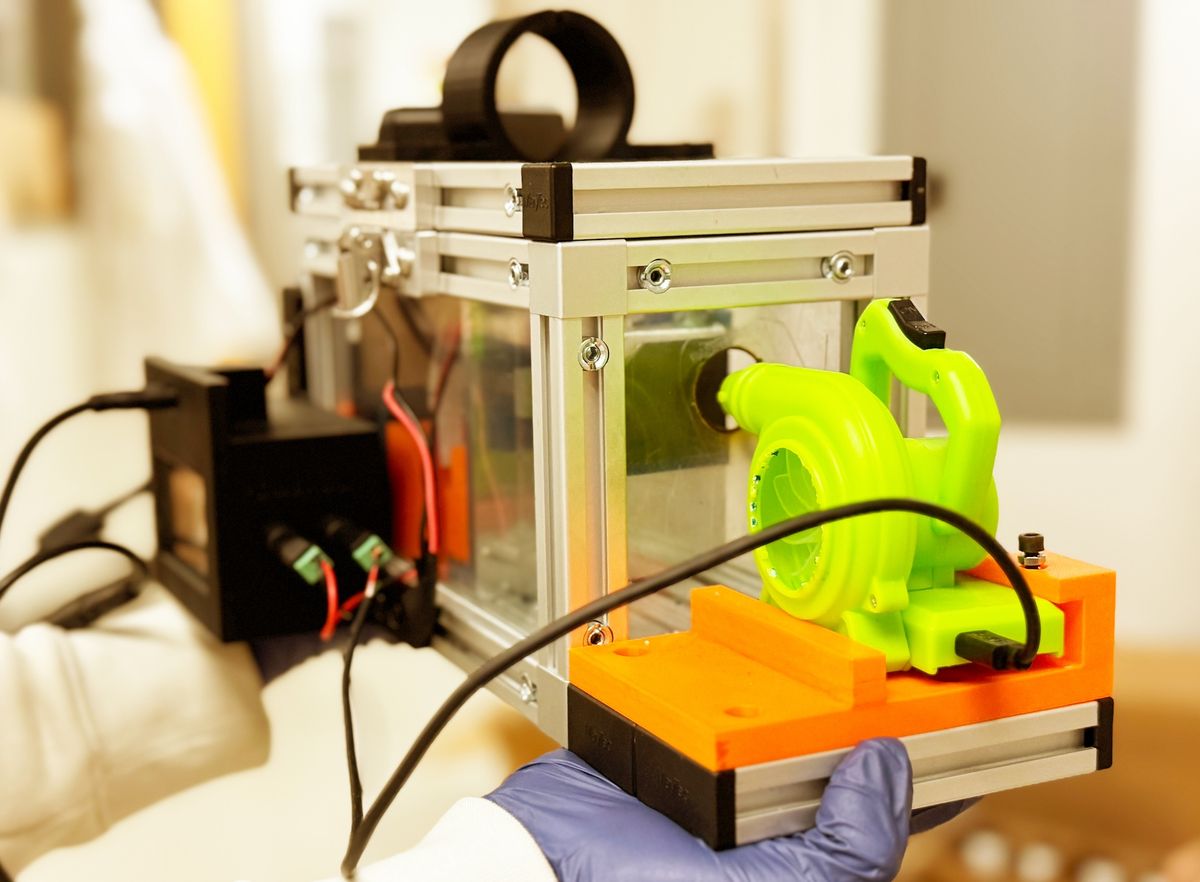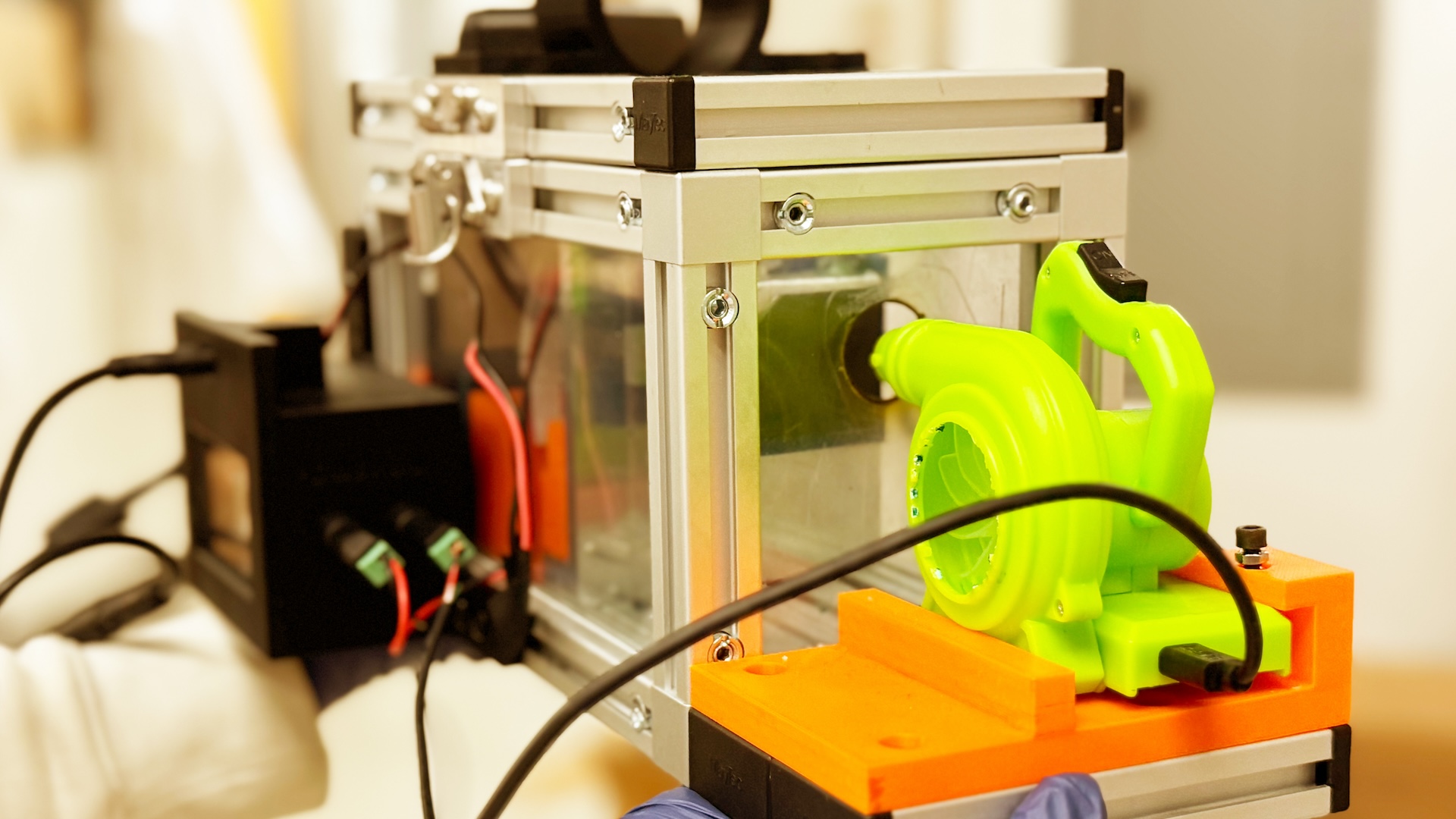
A new breathalyzer-like system could one day detect illnesses by spotting biological markers in the air we exhale, researchers report.
The hope is that this could simplify medical diagnoses by making health monitoring as simple as breathing into a device, the scientists say. Their prototype device, called the airborne biomarker localization engine (ABLE), condensates airborne molecules into concentrated liquid droplets.
The droplets ABLE generates are compatible with existing tech, including simple test strips, making the “platform both highly accessible and very low-cost,” study co-author Bozhi Tian, a professor at the University of Chicago, told Live Science in an email. The scientists described ABLE in a report published May 21 in the journal Nature Chemical Engineering.
“As a researcher working on biosensing and bioelectronics, I am very excited to see this work,” said Jinghua Li, an associate professor in the Department of Materials Science and Engineering at The Ohio State University, who was not involved in the study.
“Airborne biomarker detection has long attracted significant interest, though achieving the required sensitivity has remained a challenge,” Li told Live Science in an email. Once the technology is validated, “users could simply exhale onto a test strip and receive a health assessment within minutes in the future,” she said.
New approach to diagnostics?
Many diagnostic tests require blood draws, saliva swabs or urine samples — but collecting such samples can introduce risk, inconvenience, or both to patients. Sampling breath could help sidestep these problems.
Related: People can be identified by their breathing patterns with 97% accuracy
The body emits volatile organic compounds (VOCs) — small organic molecules that are typically gaseous at room temperature — and these can be found in human breath. Studies suggest that specific chemicals can be tied to medical conditions, making them a potential tool for diagnosis. Several scientists recently compiled a database of 327 different breathborne VOCs that have also been tentatively linked to diseases, including asthma, diabetes and lung cancer.
However, there’s a difficulty in using VOCs for diagnostics: they are present at incredibly low concentrations, sometimes numbering as few as 1 in a trillion particles of exhaled air. This makes monitoring these compounds challenging.
Now, ABLE can suck in exhaled air through a pump, add water vapor via a humidifier, and cool the mixture to cause condensation. This changes the airborne compounds into concentrated droplets that slide into a collection reservoir, ready for testing.
The prototype device measures 4 by 8 inches (10 by 20 centimeters) and costs less than $200 to build, according to Tian. It can collect about 1 milliliter of condensate in 10 minutes, providing enough sample for existing liquid-detection methods to analyze.

More research is needed
As proof of concept, the researchers tested ABLE’s ability to collect several airborne chemicals. One experiment looked for glucose in exhaled human breath, confirming that the samples were not too dilute and could be accurately tied to blood-sugar concentrations in the blood. “The high sensitivity of ABLE allows the usage of glucose test strips as the downstream sensors,” the researchers reported.
The team also ran experiments with “humanized” lab mice imbued with microbes from human infants, who were born either preterm or full-term. They compared the concentrations of glycosphingolipids — known regulators of inflammation — in the breath of the two sets of mice, finding higher levels in the “preterm” group.
They also used the device to collect airborne pollen allergens, as well as aerosolized E. coli, which could be found in the air near recently flushed toilets, for instance. These tests could potentially justify ABLE’s use as a monitor of ambient air quality, the researchers think.
These experiments suggest ABLE could be useful for tracking chemicals in breath and ambient air, but a problem remains to be solved: because airborne VOCs have been difficult to analyze, scientists yet don’t have a comprehensive understanding of which compounds relate to what disease, the researchers noted.
Further study is needed to catalog potential biomarkers and confirm their usefulness in clinical settings. The team is starting by collaborating with doctors who treat inflammatory bowel disease to try to identify breathborne markers of inflammation, Tian told Live Science in an email.
The team is also working to make the device smaller, so it can be turned into a wearable, and are working with collaborators to move toward commercialization. This could get ABLE into more medical institutions to enable additional research into the medical relevance of VOCs.

